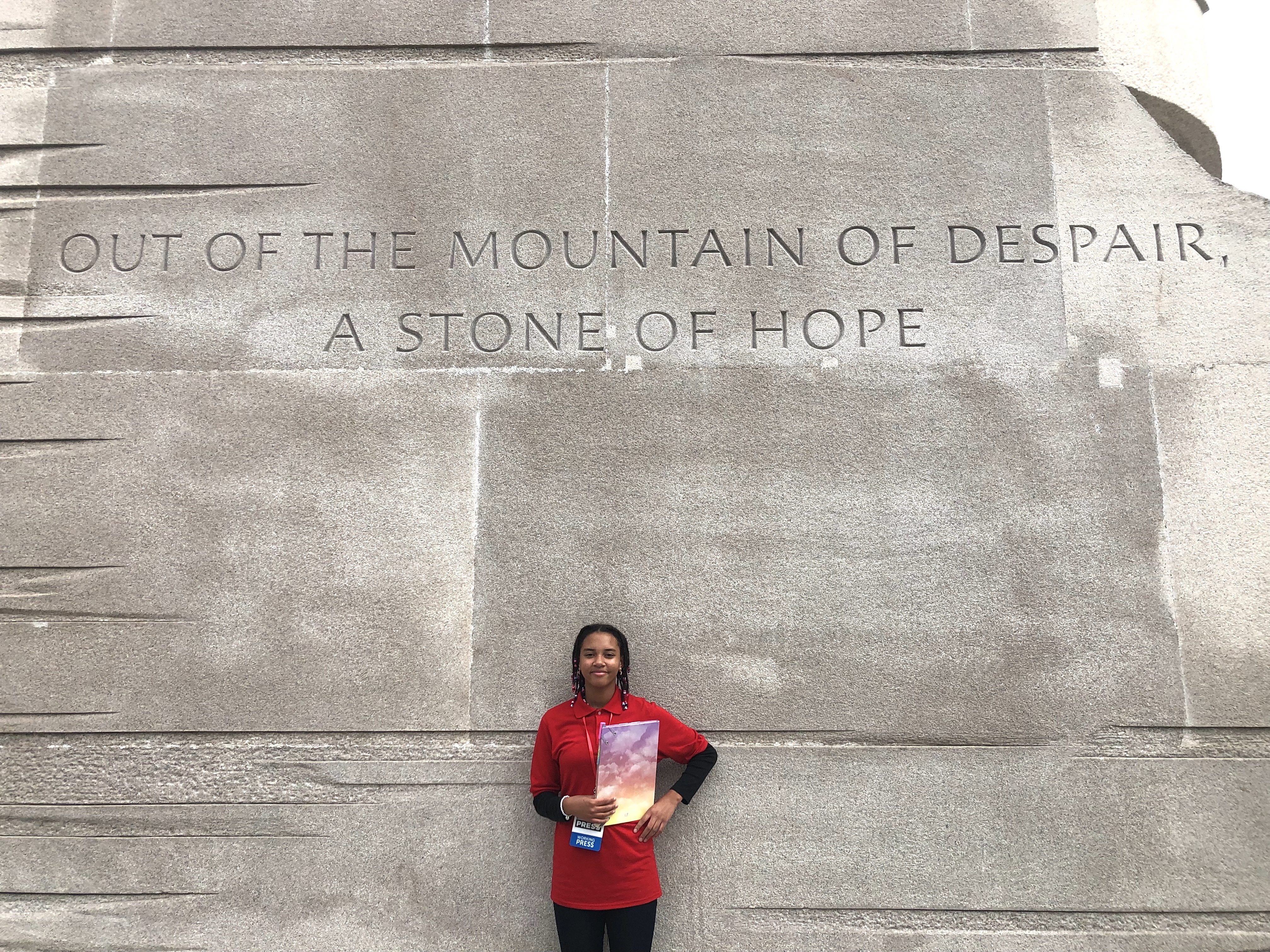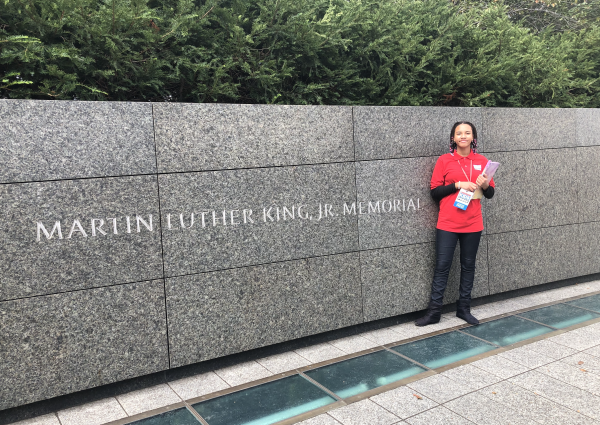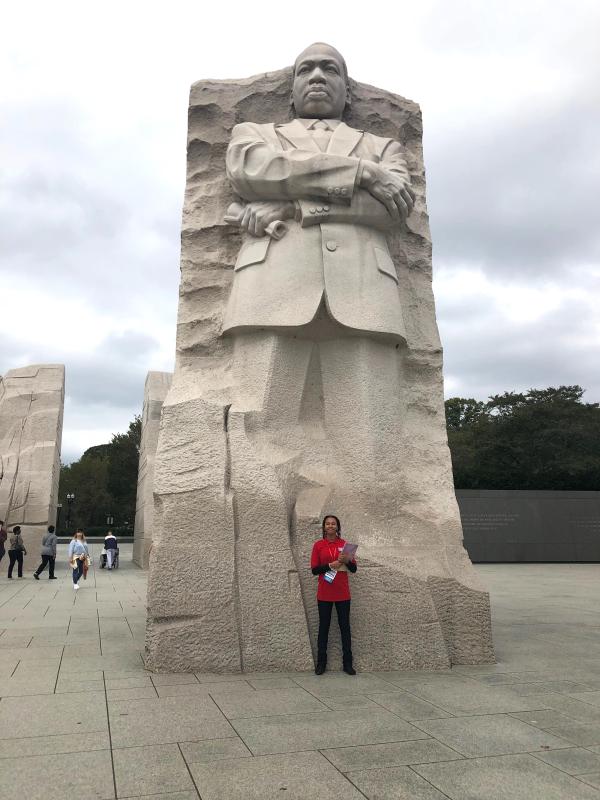KID REPORTERS’ NOTEBOOK
Reflecting on Dr. Martin Luther King Jr.’s Legacy


Skye visits the Martin Luther King Jr. Memorial in Washington, D.C.
I recently visited the Martin Luther King Jr. Memorial in Washington, D.C. Completed in 2011, it’s located on the Tidal Basin, directly across from the Jefferson Memorial. The centerpiece of the memorial was inspired by a phrase from King’s 1963 “I Have a Dream” speech: “Out of a mountain of despair, a stone of hope.”
King delivered the speech at the March on Washington 60 years ago. A leader of the civil rights movement in the 1950s and ’60s, he fought for equality for Black Americans, who faced vicious discrimination at the time.
King spoke of his dream that his four children would grow up in a world where they did not face prejudice. “With this faith,” he said in front of hundreds of thousands of people, “we will be able to hew out of the mountain of despair, a stone of hope.”
Visitors enter through “the mountain of despair.” On the other side is a 30-foot tall statue of King created by Chinese sculptor Lei Yixin. King is looking into the distance, clutching a rolled-up manuscript of the “I Have A Dream” speech in his left hand.

King sacrificed his life to ensure the rights of Black Americans, who had long been denied equality.

“A BETTER HUMANITY”
My visit to the memorial inspired me to reflect on Dr. King’s legacy and the nonviolent campaign he led for change. I asked people at my middle school in Georgia what he means to them. “King tried to make people equal and make the world a better place,” said Anthony Reed, an eighth grader.
King led the civil rights movement by organizing and participating in boycotts, marches, and peaceful protests. He also gave speeches around the country. His acts of civil disobedience led to his arrest and imprisonment several times.
“King’s greatest legacy is sacrificing his life for a better humanity,” said social studies teacher Chialanzo Miller.
On April 4, 1968, King was assassinated at a hotel in Memphis, Tennessee. He was in Memphis to help striking sanitation workers earn a fair wage.
“I was in my mother’s room that day,” recalled Patty Mosley, an ELA coordinator who was a child in 1968. “I felt something because I, too, am about change.”

Skye in front of the 30-foot tall granite statue of King, which was designed by Chinese sculptor Lei Yixin.
